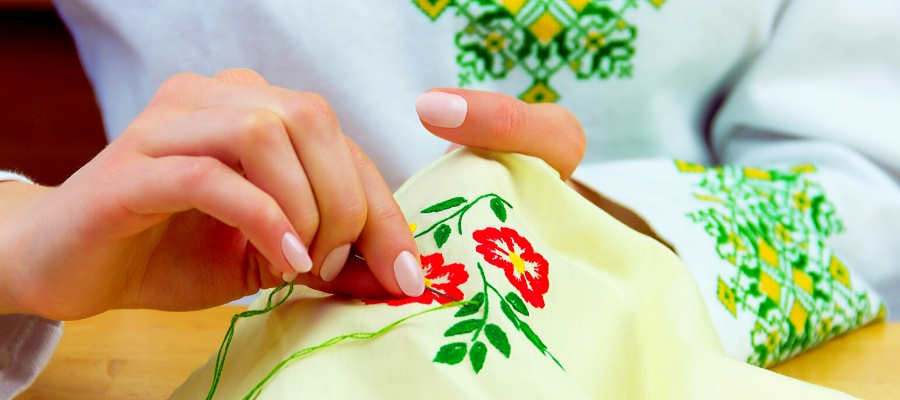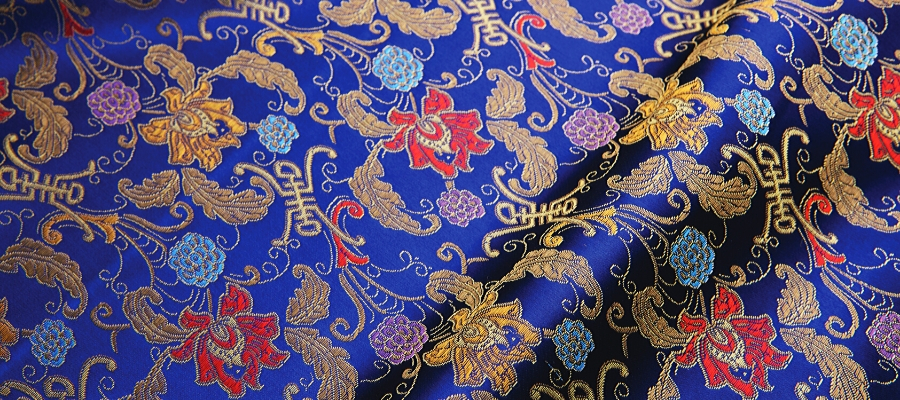The art of decorating a piece of fabric or any other material for that matter has been practised for centuries. People all around the world have used them at some or the other point in time. Recorded history, paintings, and sculptures from many ancient civilizations have shown people wearing or using embroidered clothes. In other words, primitive humankind was quick to figure out that the stitches can do more than joining the animal skins together. During an archeological finding, a fossil dating back to the Cro-Magnon days (30,000 BC) was found that had heavily hand-stitched and decorated clothing, boots, and a hat. And this just one instance. Embroidery has its own unique and rich history in different cultures.
Fossils from around 5000 and 6000 B.C. in Serbia had animal hides with elaborately done shells stitched with decorative designs on it. The famous Chinese embroidery goes way back to 3500 B.C., who used silk thread, precious pearls, and stones in different works. In Sweden, the earliest finds of embroidery are from the Viking Age, around the 9th and 10th centuries.
Embroideries in Europe, as well as other parts of the world, became more common by 1500 A.D. In fact, in many cultures, including ancient Persia, Japan, India, China, and Medieval Europe, elaborately embroidered clothes, religious items, and household objects became a sign of wealth and status. In many parts of the word, they still are! The intricate thread and beadwork gained popularity from this time to the 1700s.
From tablecloths to napkins and bed-linens, everything was marked with embroidered letters and numbers, which had a highly practical purpose. The embroidered letters would usually be the family's initials or similar logo, a great way to identify the clothes anywhere! Whether for decorative or functional purposes, the embroidery was practised across cultures and classes. The fine ladies of the upper-classes were taught the intricate embroidery skills. In contrast, the lower or working-class women were mostly taught quilting, mending, and especially marking the household items.
To learn and practice various letters and embroidered typo-graphs, people would practice on samplers. Whenever they met a fellow enthusiasts with samplers of different typo-graphs, they'd copy them and save them to their own collection. In case you're not sure of what a sampler is, imagine a small square piece of fabric (usually white) with a specific embroidery design or technique on it. It's more like having your personal cookbook or, in this case, Stitch book.
Traditional folk techniques were passed from generation to generation in cultures, and elaborate freehand stitched thread embroidery began to dwindle with the machine age of the 1800s.
The yarns and fabrics in traditional embroidery varied everywhere. For thousands of years, silk, wool, and linen have been used. Today, apart from these traditional fabrics, materials like cotton, rayons, and novelty yearns are also common.
Though embroidery has come a long way, both in style, technique, and use, however, it has maintained its intrigue throughout history as its popularity continues to grow even in today's time.
At Museum Replicas, we offer beautiful embroidery done by our in-house sewing department. Choose from our open front Ranger Tunic, Solid Tunic, or Knightly Tabards. We also offer Clan Badge embroidery on our Windlass Active Wear Polo Shirts! Choose from over 130 Scottish Clan Crest Badges. Embroidered at the time of your order, it's almost like getting custom-made clothes!





